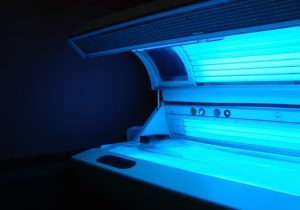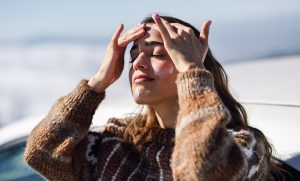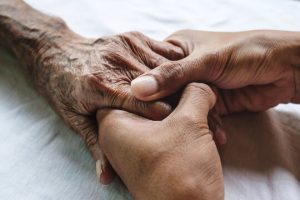By Dr Emma Knight

Growing up in the UK and studying at the University of Liverpool – known as the sunbed capital of the world – I, like many young people, used tanning beds in pursuit of healthy, glowing skin. Now, living in Australia, the skin cancer capital of the world, I regret those choices. Although awareness of UV damage has improved, some myths about skin cancer persist. Understanding the facts is crucial for prevention and early detection. Let’s debunk common skin cancer myths and arm you with the essential knowledge to protect your skin health.
Myth 1: Tanning Beds Are Safe if Used Moderately

Fact: Tanning beds have been banned in Australia, but many people still use them on holidays abroad. Tanning beds are harmful to your skin, regardless of how often you use them. They emit UV radiation that significantly increases your risk of skin cancer, including melanoma – the deadliest form. There is no safe level of UV exposure from tanning beds. If you want a tan, opt for sunless tanning products, which don’t expose your skin to harmful UV rays. Remember, UV damage also leads to premature skin aging.
Myth 2: Only Fair-Skinned People Get Skin Cancer
Fact: While fair-skinned individuals have a higher risk due to lower melanin levels, anyone can develop skin cancer, regardless of skin tone. Darker-skinned individuals are less likely to develop skin cancer, but when they do, it is often diagnosed at a later stage and can be more aggressive. Sun protection is essential for everyone, irrespective of skin color.
Myth 3: You Only Need Sunscreen on Sunny Days
Fact: UV rays can penetrate clouds and damage your skin even on overcast days. Sunscreen should be part of your daily routine, applied every morning, and reapplied every two hours if you’re outdoors. Even in winter or on cloudy days, UV rays can affect your skin, so never skip sunscreen. I keep a bottle in my car door and a small one clipped to my backpack as reminders to top up!
Myth 4: A Base Tan Provides Adequate Protection
Fact: A base tan is not a reliable form of protection against UV damage. It provides only minimal protection, equivalent to an SPF of about 4, which is insufficient to prevent skin damage. Relying on a base tan is dangerous and can increase your risk of skin cancer. Always use broad-spectrum sunscreen with at least SPF 30 for effective protection.

Myth 5: Skin Cancer Only Affects the Elderly
Fact: While the risk of skin cancer increases with age, it can affect people of all ages. Melanoma, in particular, is one of the most common cancers among young adults, especially women. Regular skin checks from an early age and sun-safe practices are crucial for early detection and reducing risks.
Myth 6: Skin Cancer Is Only a Concern for Those Who Sunbathe Frequently

Fact: Skin cancer risk is linked to cumulative sun exposure, not just intense sunburns. Even occasional sun exposure, such as during daily commutes or outdoor activities, contributes to UV damage over time. Daily skin protection is vital for reducing your risk.
Myth 7: Skin Cancer Is Always Noticeable and Painful
Fact: Skin cancer can be subtle and painless, making it easy to overlook. Early-stage skin cancers might not show obvious symptoms or cause discomfort. Any changes in your skin, such as new moles or alterations in existing ones, should be checked by a doctor. This is why professional skin checks are crucial, to spot subtle signs that might be missed during self-exams.
Myth 8: Sunscreen Is Only Necessary for Fair-Skinned Individuals
Fact: Sunscreen is essential for everyone, regardless of skin type or color. All skin types can suffer from UV damage, which increases the risk of skin cancer and accelerates skin aging. Choose a broad-spectrum sunscreen suitable for your skin type, apply it daily, and reapply it every two hours or after swimming or sweating.
Myth 9: Skin Cancer Can Only Happen on Sun-exposed Areas of Skin
Fact: Many skin cancers have a genetic component, and while UV exposure is a significant risk factor, some skin cancers can develop in areas not exposed to the sun. This means they can appear in places where you’d never expect, which highlights the importance of regular skin checks.
Myth 10: You Can’t Get Skin Cancer in Winter
Fact: While UVB rays (which cause sunburn) are less intense in winter, UVA rays (which penetrate deeper into the skin) are present year-round and contribute to skin ageing and cancer. This makes sun protection and skin checks just as important in winter as in summer.
Dispelling these myths and understanding the reality of skin cancer can empower you to take proactive steps in protecting your skin. Two out of every three Australians will develop skin cancer in their lifetime. Regular skin checks, diligent sun protection, and staying informed are crucial for prevention and early detection. Don’t let misconceptions jeopardise your skin health—be proactive, stay educated, and consult skin care experts to keep your skin safe.
For more information, to schedule a skin check, or if you have any questions about skin cancer prevention and treatment, feel free to reach out to us at the WA Skin Cancer Centre. Your skin’s health is worth every effort.
Book your consultation today.
About the Author
 Dr Emma Knight
Dr Emma Knight
BSc, MBChB, FRACGP
Dr Knight is a highly skilled and dedicated medical professional with a special interest in skin cancer prevention, detection, and treatment. With extensive experience in dermatology and general practice, she is passionate about educating patients on the importance of early detection and providing comprehensive care. Dr Knight is committed to raising awareness about skin health and delivering the highest standard of care to her patients.